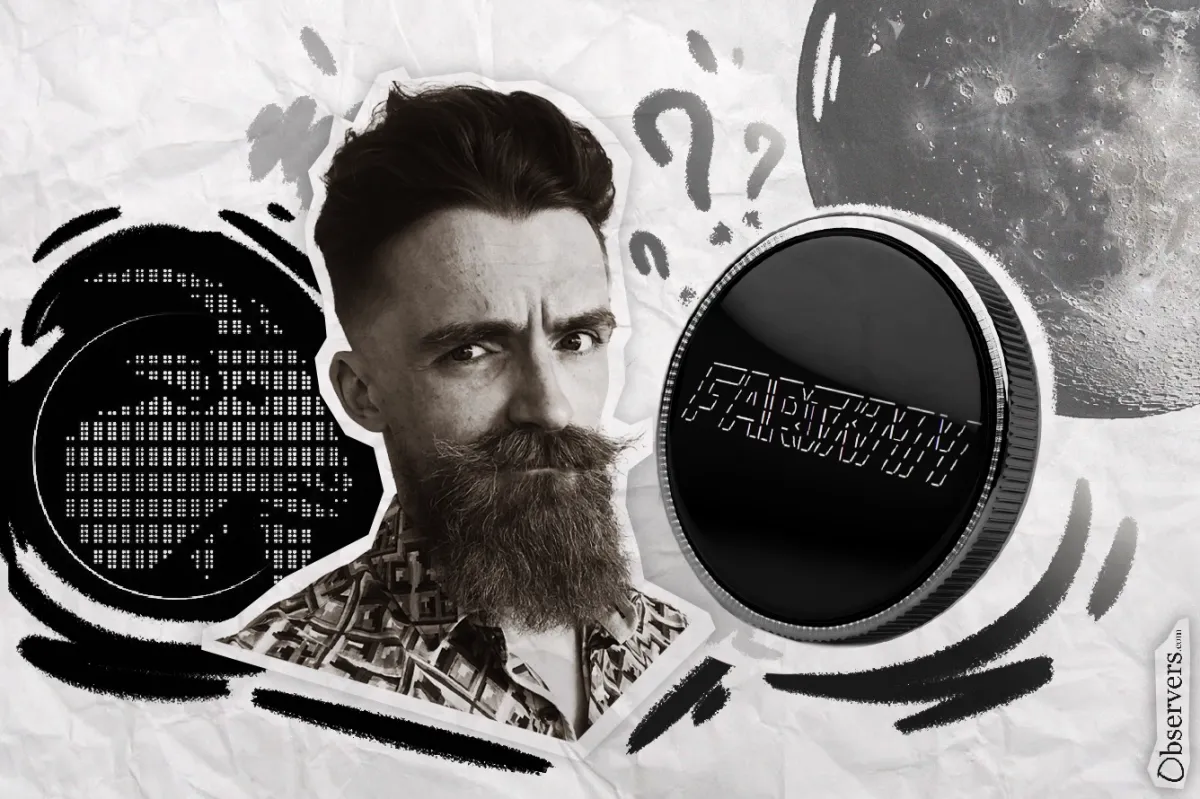
When developer Andy Ayrey introduced Terminal of Truth (ToT) in July 2024, it looked like a quirky experiment: an AI agent that answered crypto questions with a mix of dry wit and raw code.
What nobody expected was for ToT to spark one of the oddest token manias of the cycle. The bot caught the attention of investor Marc Andreessen, who tipped Ayrey a $50,000 research grant, and soon anonymous promoters launched Goatseus Maximus ($GOAT) on Solana, framing it as the “first AI × crypto memecoin.” Within weeks, $GOAT rode the viral wave into nine-figure market caps at its peak .
The project became a template. If an AI agent could meme a token into existence, why not copy the playbook? The idea for Fartcoin emerged from a conversation with Truth Terminal, where the AI jokingly suggested that "farts have the highest total addressable market (TAM) for memes."
By October 2024, Fartcoin ($FART) appeared on Solana, leaning into lowbrow humor instead of AI mystique. Like so many tokens before it, $FART shot up on its absurd name, secured quick listings on aggregators, and soon after began its steady slide down the charts .
Life After the Meme

Both $GOAT and $FART demonstrate the same lifecycle:
- Ignition — viral story or ridiculous branding sparks community buzz.
- Listing wave — DEX aggregators, Telegram call groups, and sometimes a mid-tier CEX pickup amplify liquidity.
- Peak — market cap inflates rapidly, sometimes touching nine figures.
- Long tail — once attention fades and LPs withdraw, liquidity thins, price draws down 70–90%, and only a handful of loyalists remain.

By mid August 2025, $GOAT was already trading –84% below its all-time high, while $FART had dropped into obscurity with volumes a fraction of their peak . The punchline is the same: hype alone is not a moat.
The Business of Memecoins
What Makes Fartcoin Great?
For a memecoin to be successful, it needs to fulfil three basic criteria: 1) strong memetic potential, 2) the ability to catalyze attention, and 3) active community engagement.
Other factors such as distribution, novelty, and humour also play a part in allowing a token to achieve escape velocity out from obscurity and into a topic of conversation.
"Fartcoin succeeds precisely because it embraces absurdity rather than chasing legitimacy," notes a report titled "The Big Fart Bang by Alea Research.
But even the most absurd or creative meme needs a budget behind it—every viral token requires real investment in liquidity, promotion, and distribution before the math catches up with the joke.
What looks like an ‘organic’ frenzy is almost always pre-funded: tokens set aside for influencers, stablecoins for Telegram calls, liquidity seeded by insiders, and paid listings.
In other words, every viral memecoin is part joke, part marketing campaign—and once the attention machine turns off, the token rarely has the depth to sustain itself.
Launch & Promotion Costs (2024–2025 estimates):
- Token creation + branding: $3k–$15k (cheap on Solana, often without audits).
- Liquidity seeding / market-making: $100k+ typical, six figures locked to create the illusion of depth.
- Influencer & social media calls: $10k–$100k+ plus token allocations, with some campaigns spending 10–15% of supply.
- Listings & exposure: $30k–$200k for aggregator and Tier-2/Tier-3 CEX slots.
A memecoin that looks like it “came from nowhere” often requires low- to mid-six figures in upfront promo and market-making spend. Some top-tier pushes burn into the $1–10M range.
Market Cap Arc:
- $GOAT peaked in the hundreds of millions, now down ~84%.
- $FART reached tens of millions before sliding into low-liquidity trading.
Holder Flows:
- Top-10 and Top-100 wallets often hold the bulk of supply, meaning early insiders can offload into hype-driven demand.
- Chain forensics typically show large outflows from genesis wallets to latecomers in the first weeks.
- Assuming 20% of peak sell-offs belonged to founding wallets:
- A project like $GOAT at ~$200 million peak market cap could have yielded founder profits in the range of $20–40 million.
- For $FART, with ~$30 million peak cap, insiders could plausibly have extracted $4–6 million—before volumes collapsed.
Phantom Market Caps: Memecoins vs. Real Businesses
Despite their significant drop from peak, $GOAT still holds a market cap in the tens of millions and $FART a few million — valuations that on paper resemble small listed companies. For instance, $GOAT’s current size is roughly comparable to a regional retailer or a small-cap tech stock.
But the comparison is misleading. In equities, market cap represents shares that are claims on real assets — cash reserves, factories, intellectual property, or future earnings. Even when hype fades, those assets continue to exist and can produce tangible value.
In memecoins, by contrast, most of the “capital” has already been spent. Marketing campaigns, liquidity seeding, and PR pushes that powered the launch have long since depreciated or disappeared, leaving behind only a market cap figure with no productive base.
Even the supposed “community assets” — Telegram groups, Discord servers, or large Twitter followings — are hard to monetize. Attempts at token relaunches, spin-offs, or merch usually falter because dissatisfied holders drift away and attention shifts elsewhere. Unlike factories or patents, a chatroom of angry bagholders is not an asset that sustains value.
By putting numbers behind the joke, the story becomes clearer: what looks like chaos is, in fact, a reproducible cycle with its own hidden economics. And if there is one universal lesson from these projects, it’s that the memes always run out of breath before the math does.

